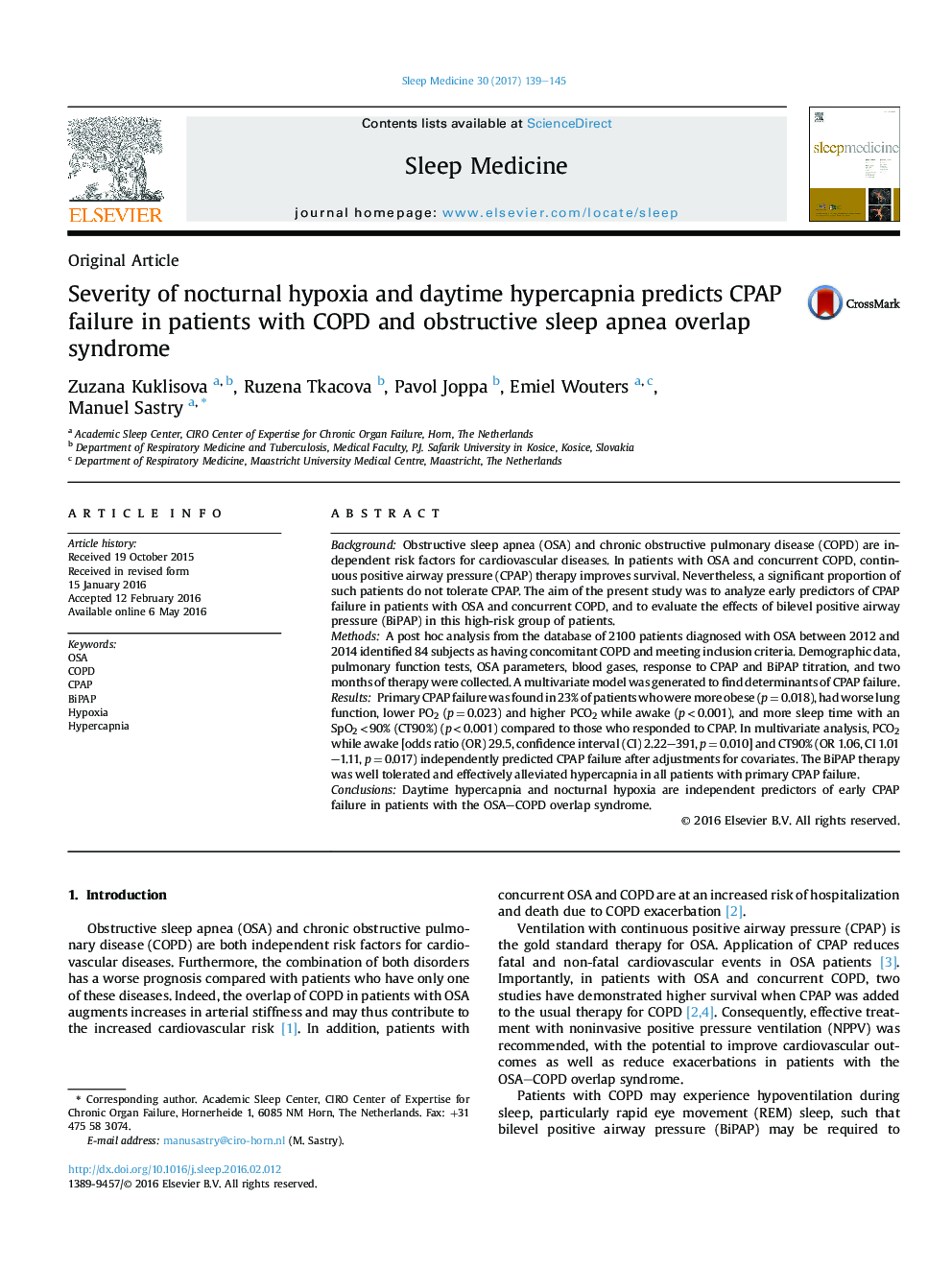| کد مقاله | کد نشریه | سال انتشار | مقاله انگلیسی | نسخه تمام متن |
|---|---|---|---|---|
| 5643820 | 1586479 | 2017 | 7 صفحه PDF | دانلود رایگان |

- Daytime hypercapnia and nocturnal hypoxia are predictors of CPAP failure in patients with the OSA-COPD overlap syndrome.
- An increase of CT90% (time with SpO2â<â90% of total sleep time) by 1% increases the likelihood of CPAP failure by â¼6%.
- Bilevel positive airway pressure therapy effectively alleviates hypercapnia in patients with primary CPAP failure.
- It is desirable to carefully evaluate the CT90% with blood gas analysis during the daytime to avoid primary CPAP failure.
BackgroundObstructive sleep apnea (OSA) and chronic obstructive pulmonary disease (COPD) are independent risk factors for cardiovascular diseases. In patients with OSA and concurrent COPD, continuous positive airway pressure (CPAP) therapy improves survival. Nevertheless, a significant proportion of such patients do not tolerate CPAP. The aim of the present study was to analyze early predictors of CPAP failure in patients with OSA and concurrent COPD, and to evaluate the effects of bilevel positive airway pressure (BiPAP) in this high-risk group of patients.MethodsA post hoc analysis from the database of 2100 patients diagnosed with OSA between 2012 and 2014 identified 84 subjects as having concomitant COPD and meeting inclusion criteria. Demographic data, pulmonary function tests, OSA parameters, blood gases, response to CPAP and BiPAP titration, and two months of therapy were collected. A multivariate model was generated to find determinants of CPAP failure.ResultsPrimary CPAP failure was found in 23% of patients who were more obese (pâ=â0.018), had worse lung function, lower PO2 (pâ=â0.023) and higher PCO2 while awake (pâ<â0.001), and more sleep time with an SpO2â<â90% (CT90%) (pâ<â0.001) compared to those who responded to CPAP. In multivariate analysis, PCO2 while awake [odds ratio (OR) 29.5, confidence interval (CI) 2.22-391, pâ=â0.010] and CT90% (OR 1.06, CI 1.01-1.11, pâ=â0.017) independently predicted CPAP failure after adjustments for covariates. The BiPAP therapy was well tolerated and effectively alleviated hypercapnia in all patients with primary CPAP failure.ConclusionsDaytime hypercapnia and nocturnal hypoxia are independent predictors of early CPAP failure in patients with the OSA-COPD overlap syndrome.
Journal: Sleep Medicine - Volume 30, February 2017, Pages 139-145